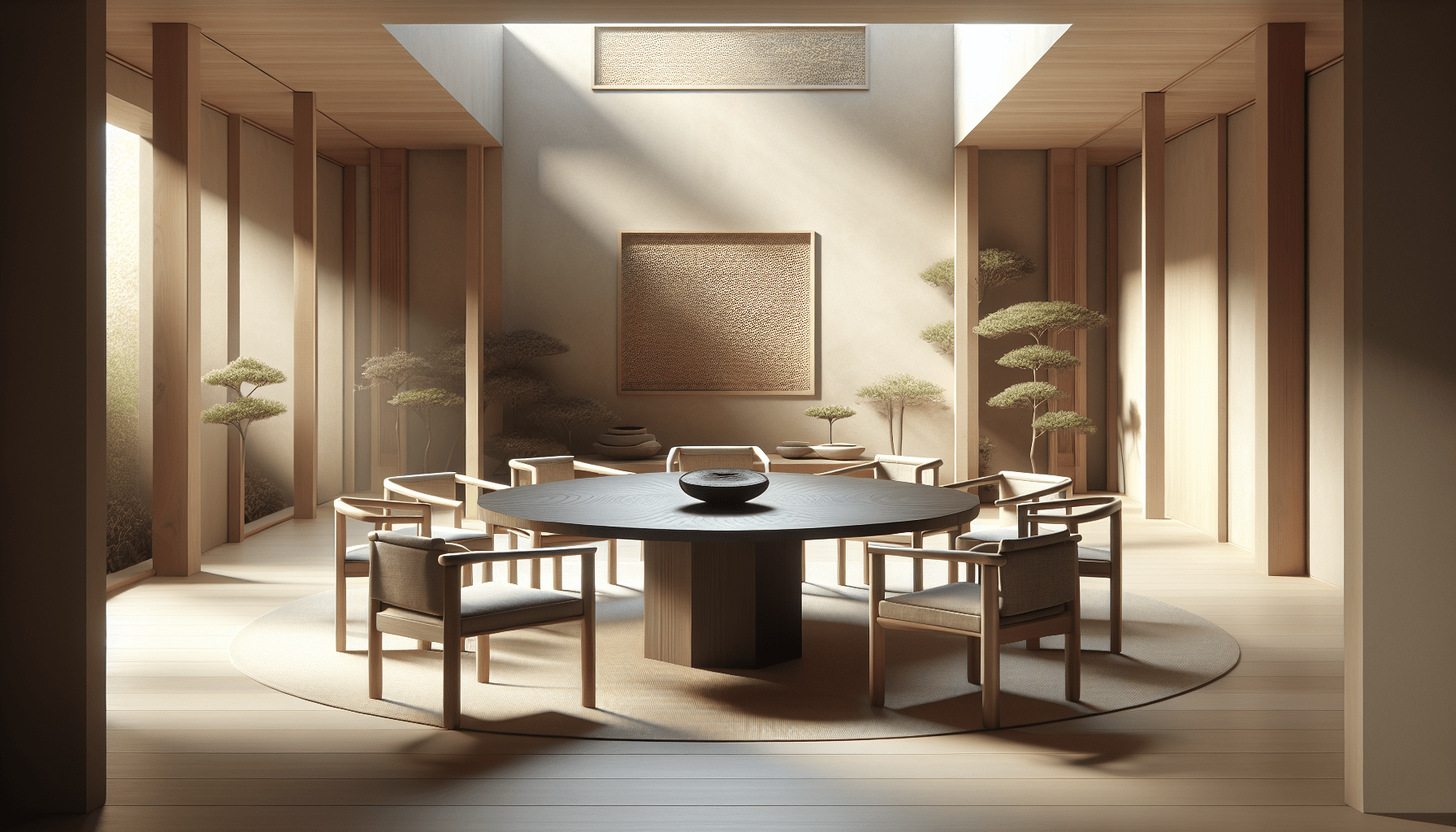Have you ever wondered how to create a calming yet stylish environment in your home? One design approach that might pique your interest is the combination of a monochromatic color scheme with the Japandi aesthetic.
What is Japandi Design?
Japandi design is a beautiful blend of Japanese and Scandinavian styles that emphasizes minimalism, functionality, and natural beauty. You might find this style appealing if you appreciate clean lines, cozy spaces, and a strong connection to nature. This hybrid approach emphasizes simple yet elegant design elements, focusing on harmony and balance within the space.
Key Features of Japandi Style
-
Natural Materials: You will commonly find wood, bamboo, linen, and other organic materials in Japandi spaces. These materials create warmth and a tactile quality that invites touch and attention.
-
Neutral Color Palette: A hallmark of Japandi design is its use of soft, neutral color palettes. This choice contributes not only to a serene atmosphere but also allows the beauty of individual pieces to shine.
-
Functional Furniture: Each item in a Japandi space is chosen for its function and aesthetic appeal. Furniture pieces are often low-profile and feature simple designs, making them practical yet stylish.
The Charm of a Monochromatic Color Scheme
Now, let’s break down what a monochromatic color scheme entails. In essence, you use various shades, tints, and tones of a single color to create a cohesive look throughout a space. Imagine selecting a soothing blue and using it in light, dark, and muted variations.
Benefits of a Monochromatic Scheme
-
Visual Cohesion: A monochromatic scheme helps your space feel unified. Using different shades of the same color can create fluidity and eliminate overwhelming contrasts.
-
Enhanced Focus on Form: When you utilize one color, you enhance the emphasis on the shapes and textures of your furniture and decor. This way, the beauty of each piece becomes more pronounced.
-
Easier Decor Decisions: Choosing colors becomes simpler when you stick to one hue. This can lead to quicker decision-making and a less stressful design process.
Integrating Monochromatic Spaces with Japandi Design
Considering how Japandi is characterized by its focus on simplicity, a monochromatic color scheme can work beautifully. Here are some factors to think about when blending these two styles.
Color Selection: Choosing the Right Hue
The first step is selecting a color that resonates with you. You might be drawn to calming neutrals like soft beige or pale gray, which enhance the serenity typical of Japandi design. Alternatively, you could opt for a deeper hue, such as navy or forest green, to add more drama while retaining sophistication.
Layering Textures
When embracing a monochromatic scheme within a Japandi space, layering textures is crucial. This means mixing materials such as wood, textiles, and metals within your chosen color palette. It creates depth and visual interest without sacrificing cohesion.
| Material | Example Textures | Suggested Use |
|---|---|---|
| Wood | Reclaimed oak, polished bamboo | Furniture, flooring |
| Textile | Linen, wool, cotton | Throws, curtains, cushions |
| Metal | Brushed brass, matte black | Light fixtures, accent pieces |
Balance and Proportion
Japandi design is also about balance and proportion. Ensure that larger pieces do not overwhelm your space; they should be complemented by smaller, delicate items. For instance, if you choose a large beige sectional, compliment it with smaller textural elements like knitted throw pillows in varying shades of beige or cream.
Is a Monochromatic Scheme a Good Idea for Japandi Spaces?
You’re probably asking yourself whether a monochromatic scheme truly aligns with Japandi design principles. Without a doubt, it can! Here’s why:
Promotes Serenity
Both Japandi and a monochromatic scheme focus on creating calm, peaceful environments. If you’re looking for tranquility in your home, this fusion can pave the way for a soothing atmosphere. Using calming shades can enhance the meditative qualities of a Japandi space.
Emphasizes Natural Light
Japandi spaces often seek ways to maximize natural light. A monochromatic palette can enhance this by reflecting light differently throughout the day. Lighter shades can open up the space, while deeper tones can create a snug, inviting area perfect for relaxation.
Flexibility in Decor
Another advantage of combining these styles is flexibility. A monochromatic scheme gives you the freedom to explore various decor styles, knowing that any addition in the same color family will harmonize beautifully within your Japandi framework.
Personalization and Expression
Though both styles emphasize simplicity and minimalism, it’s your home. Incorporating personal touches—like art or handmade ceramics—can add unique character while still adhering to the aesthetic norms of Japandi design.
Tips for Achieving Monochromatic Japandi Spaces
Let’s discuss some actionable tips to help you create the perfect monochromatic Japandi space.
Start with a Focal Point
Choose one beautiful item as your focal point, like a piece of Scandinavian furniture or an exquisite Japanese art piece. The color of your focal point could be a different shade of your chosen palette, providing a subtle variation that highlights the beauty of both the object and the color scheme.
Play with Light and Shadow
Consider how natural light interacts with your space. A well-placed mirror can amplify light and create an illusion of more space. If you’ve chosen a darker color palette, using various shades will articulate shadow play in your room beautifully.
Mix and Match Patterns
While you may be tempted to keep everything simple, introducing a few carefully selected patterns can enhance your space. Think about incorporating patterned textiles within your color scheme—just ensure the patterns don’t clash with the overall aesthetic.
Showcase Greenery
Incorporating natural elements like plants can uplift your monochromatic scheme within a Japandi space. Greenery introduces new textures and colors, and it also aligns with the organic nature found in both design styles. Choose pots that follow your monochromatic scheme for a unified look.
Common Misconceptions About Monochromatic Schemes
Many people worry that sticking to one color may lead to a dull or uninviting space. However, there are ways to ensure your design is anything but boring!
Variety is Key
Remember, variety occurs in shades and textures, not merely colors! When layering different tones, you bring vibrancy and depth into play. Playing with various textiles, woods, and finishes allows your room to remain visually engaging.
Emotional Impact of Color
Colors evoke emotions. A beige scheme can feel cozy, while a blue-toned environment can feel serene and tranquil. It’s essential to choose a foundation color that not only aligns with the Japandi philosophy but also resonates emotionally with you.
Maintenance and Cleanliness
Another concern might be keeping a monochromatic space clean and presentable. Fortunately, a well-planned design ensures that cleanliness and organization can go hand in hand. Minimal clutter and a dedication to functional furniture help maintain a tidy appearance.
Conclusion: A Perfect Match for Your Home?
You might now be wondering if a monochromatic scheme is indeed a good idea for your own Japandi spaces. It absolutely can be! By tying together the principles of Japandi design with a thoughtful monochromatic palette, you create an inviting and harmonious environment that reflects your personality.
As you consider this design approach, remember the importance of personal expression, thoughtful selection of materials, and layered textures. Embrace simplifying choices while ensuring that comfort and uniqueness are woven into the fabric of your space. After all, it’s where you live and thrive.
So, are you ready to embark on your journey to create a serene and stylish monochromatic Japandi space? Your home deserves the beauty and tranquility this combination can undoubtedly offer!

